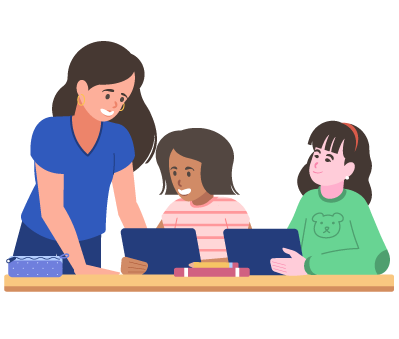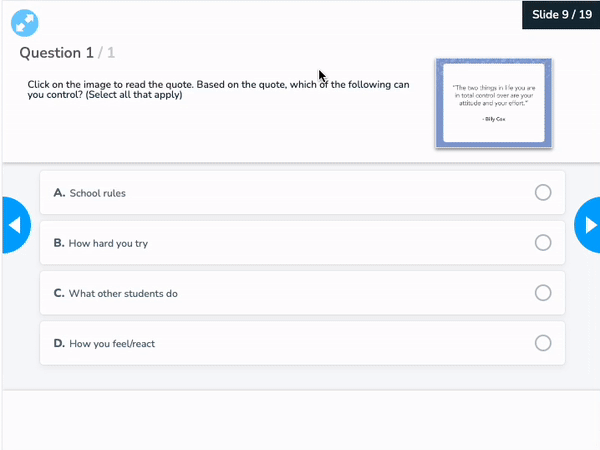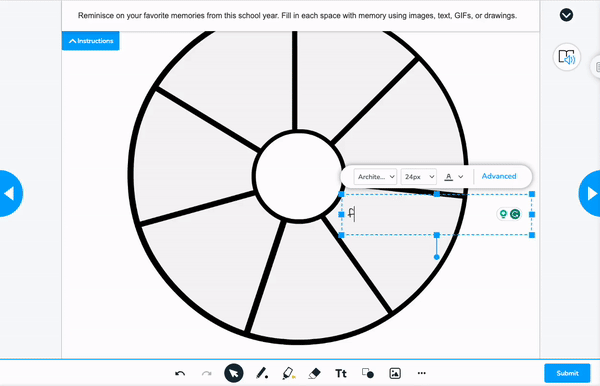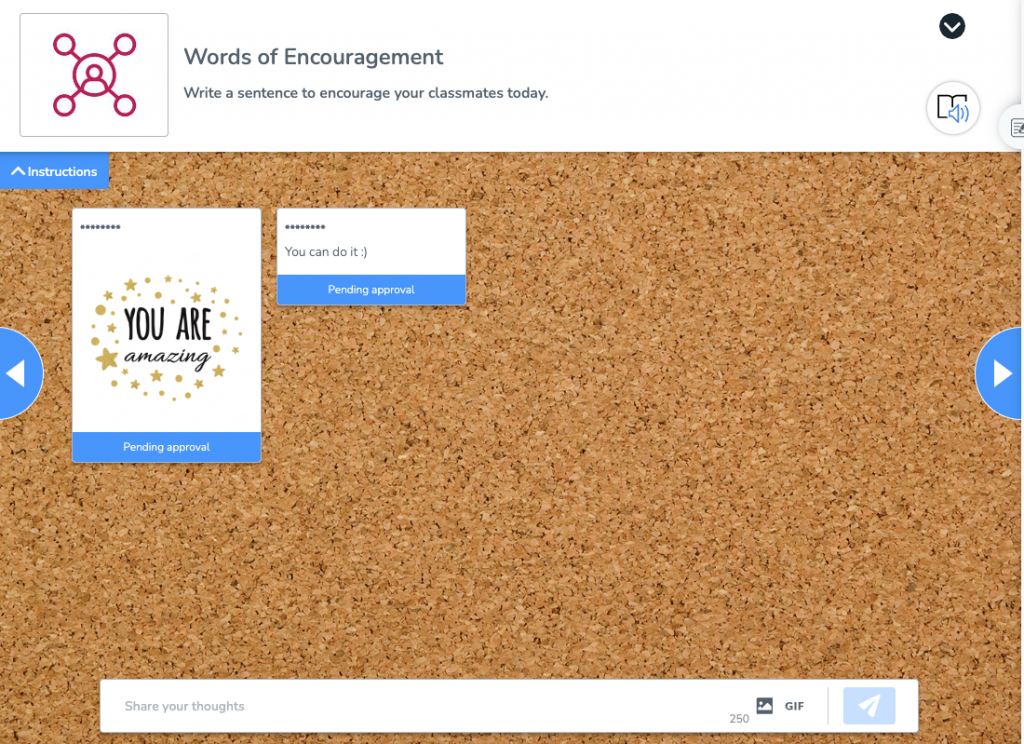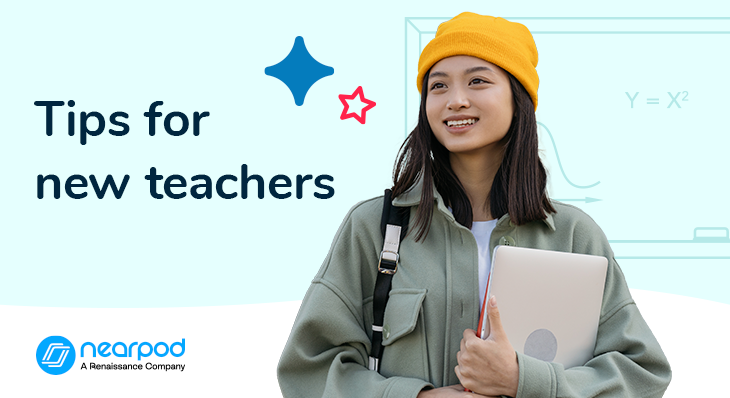
22 Tips I wish I’d known as a first year teacher
I entered the classroom as a first year teacher with an optimistic attitude, a love for kids, a belief in public school, and the FULL understanding that I had NO idea what I was doing. As a Teach for America corps member, I had gone through an intense summer training, but despite all the theory, methodology, and student teaching I absorbed, I knew that my biggest weakness was not knowing what I didn’t know…
Oh, how quickly I realized the ever-dynamic aspect of classroom teaching and learning. A couple of decades later, I’m still not convinced that any stellar teacher prep program can do the field of education justice. The sheer amount of variables that a classroom of unique individuals brings with them makes for an awe-inspiring journey, year over year. Explore essential tips and invaluable advice for new teachers embarking on their exciting journey in education!
Nearpod can support you in creating interactive lessons, accessing standards-aligned lessons, keeping students engaged, and tracking real-time insights into student learning. Teachers can sign up for Nearpod below for free. Administrators can schedule a call with an expert to unlock the full power of Nearpod for schools and districts.
However, I think true educators embrace this challenge. They revel in the variety. That’s when their artistry truly shines within the classroom’s four walls. But I do wish I had had a “cheat sheet” of tips for first year teachers — just a list of gentle reminders and teacher-inspired hacks to help the days go a bit more smoothly and to help me maintain my own sanity. As a first year teacher, I found myself the neediest student in my classroom! Boy, was I eager to learn.
I had come armed with lofty goals of asking for help, watching others teach, and aspiring to over plan… but I never had the time as a new teacher. From when the door first opened on that initial day of school until the end of the school year, I was in go-mode. What I wish I had known were all those more practical advice for new teachers that I did amass over time with experience.
Advice for new teachers: 22 Tips for teaching first year
I’ve listed twenty such tips of my own to get this valuable cheat sheet started for first year teachers:
1. Set clear expectations with students
Set clear expectations first thing and reinforce them often during the first month of school. Emphasize processes and routines, and follow through on expectations and consequences consistently. Remember, it’s easier to pull back and be less strict than it is to become more strict when it comes to classroom management.
What’s your signal to get your students’ attention? I use the doorbell. Practice the routines and procedures all year long, not just at the beginning of the year. Teach your students ways to find a solution to their problems… I teach the students that there are kid problems and kid solutions and grownup problems and grownup solutions.
Elizabeth Torres Maldonado, PioNear
2. Write and create your planbook digitally
So many unexpected hiccups can derail your best-laid plans, so design with flexibility top of your mind and an eraser in hand. Writing plans on mini sticky notes is also helpful.
Consider making your planbook digital as well, so it’s always easy to organize, edit, sort, and search for the resources you need.
3. Design and seek out your own PD
In this day and age, seek out recommended ways to hone your craft. Consider reading Wong’s tried-and-true handbook, The First Days of School: How to Be An Effective Teacher. Discover the many free options such as listening to educator podcasts, subscribing to blogs, registering for webinars, or taking an online course.
Camp Engage is a FREE virtual PD event for educators like you; packed with interactive, expert-led sessions focused on topics you care about and innovative strategies to support your instruction. We host Camp Engages twice a year, so keep an eye out for the next one you can join!
4. Make #besties
Establish strong relationships early on with the front office assistants and the custodians, as you will need them in your court countless times week in and week out (if not daily). They have eyes and ears on all aspects of the school community, and they will be your go-to ally in many instances, promise.
Give yourself the gift of not having to know everything. Don’t be afraid ask ask ask questions of veteran teachers you trust. PLUS, the office manager and the custodian can save you, make friends with them!
James Staton, PioNear
5. Google (image) it
Search online for “teacher hacks” when it comes to classroom organization and advice for new teachers and then click on the Images tab. You’ll be surprised at the ingenious ways teachers use shoe bags for craft supplies and dish racks to organize technology.
6. Keep your space clean
A dustbuster, a Mr. Clean Eraser, and a fragrant plug-in will keep your classroom in tip-top shape on a day-to-day basis. However, please keep allergens in mind when it comes to fragrances! Remember to check school policies before introducing any scented products.
7. Ask questions!
Best PD might be right down the hallway. Don’t be afraid to ask your fellow teachers for feedback or help when you need it or when you feel overwhelmed. They won’t think less of you! And, all the teachers I’ve worked with have always bent over backward to help if I asked for it.
Brittanie Payne, PioNear
There are no stupid questions, only answers. No matter who asks, the teacher or the student.
Martina Matejas, PioNear
8. Get organized digitally and traditionally
Organize one master copy of your printed materials — lessons, worksheets, and resources — in plastic sleeves. Put those sleeves in sequential order, pair them with lesson plans and notes, and group them thematically in labeled binders that can be on a shelf within reach.
Better yet, get digitally organized, and get rid of the paper clutter by compiling you files into folders. That way you can always easily edit your resources and search where to find them. You can also organize your digital Nearpod lessons by creating lesson folders and organizing them by name and color codes.
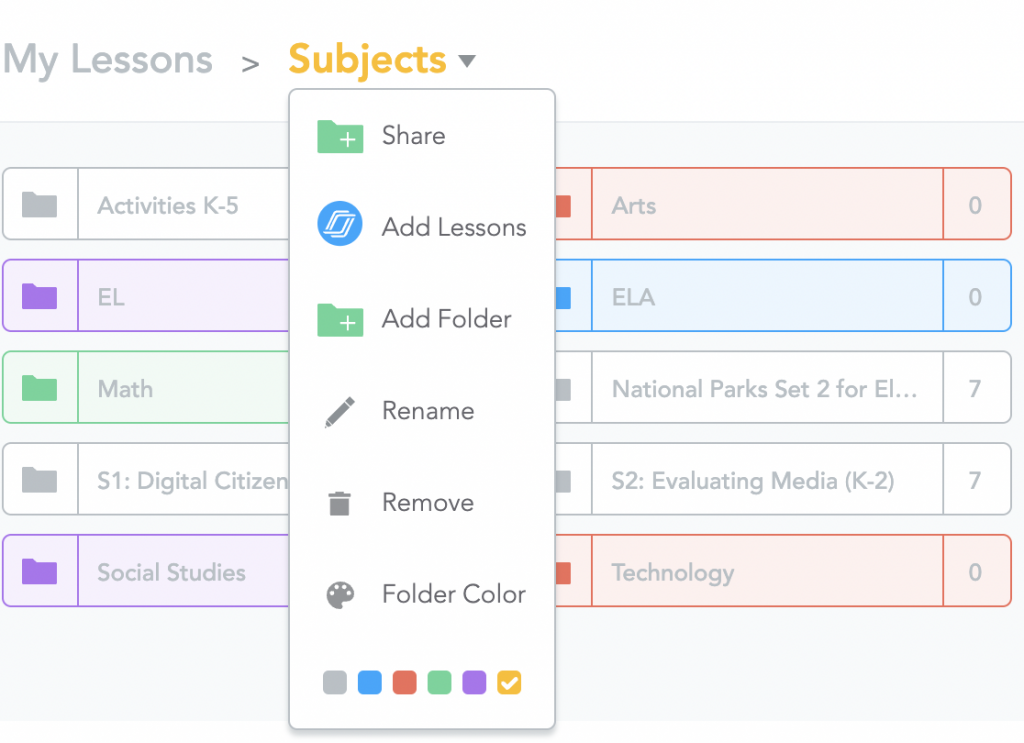
9. Paper, please!
Consider ways to cut back on paper use and save that tree by using digital alternatives on Nearpod such as Draw It, Drag and Drop, and more to support classroom activities and collaboration.
You can also seek out local companies to donate, put in requests with DonorsChoose.org, or ask your classroom families to contribute, but you will go through a lot of paper in any given school year, and the worst is having plans but then running out of paper for copies.
10. Color counts
Regardless of your students’ ages, go all out in decorating and covering classroom walls with colorful learning resources and rotating student work. You all spend hours in your room, so treat it like a second home that you all want to take care of.
11. Don’t pick at it
A staple remover will save your fingers and fingernails! This handy dandy little plastic contraption will be your new best friend. Invest in more than one sense those little guys can easily be misplaced or lost.
12. Remember to hang tough
Invest in several rolls of blue or green painter’s tape instead of masking tape to adhere student work to the walls. Regularly change out so kids can see their hard work appreciated. However, when true staying power is needed, especially on those concrete classroom walls, turn to ever-impressive duct tape.
13. Don’t go red
Vary the colors of the pens you use when reviewing work so that kids don’t associate being wrong with color. Create a robust feedback loop by considering other ways to provide feedback besides with a pen, like video feedback or a face-to-face conference. Cultivate the mindset of “failing forward,” and remember that a sticker (for all ages) goes a long way when it comes to recognition!
14. Try out different ways to channel students’ attention
Research ways to help channel children’s attention — put a strip of velcro under desks for some tactile stimulation, add a red card to the corner of desks for focus, use exercise balls instead of chairs, and practice group breathing exercises to help kids embrace mindfulness.
15. Play music
Discover what kinds of music your students like as background noise, which can help drown out other distracting classroom noises while everyone works. Look for playlists on Spotify, Pandora, Amazon Prime Music, or other streaming sources, or simply make your own and play from any digital device. Music can help calm anxiety, soothe feelings, and lift moods. Consider using Flocabulary videos as well between transitioning to different activities and units.
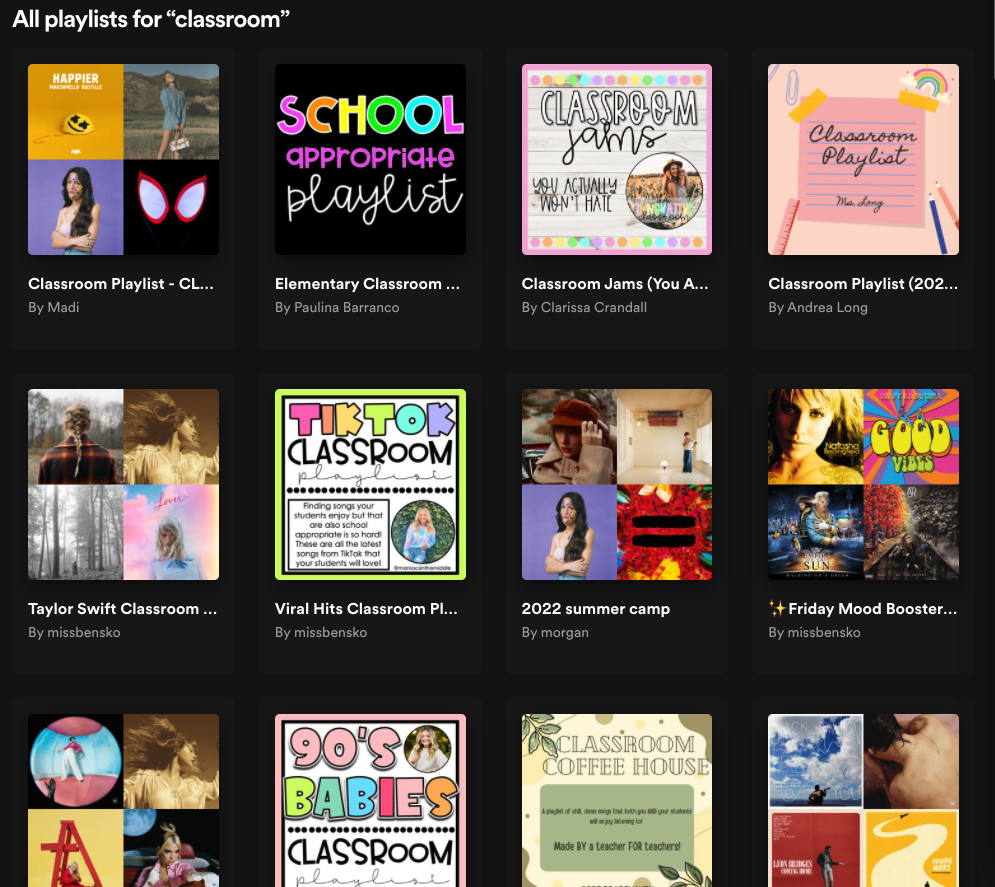
16. Build meaningful relationships with students
Sounds simple enough, but do find the time to get to know your students on a personal level. Have them fill out a questionnaire, conduct mini-conferences, and reach out to their families continuously throughout the year to establish an authentic relationship. You can use Nearpod’s Polls or Collaborate Board to conduct questionnaires and collect feedback for active learning experiences. Weave in social and emotional learning (SEL) moments with your students in your daily instruction to reinforce relationship building.
Relationships matter! Get to know the ins and outs of your students and their families! Making those connections from the start will make for a successful school year and carry you through the thick and thin! It’s as simple as knowing your student’s favorite sports team or what they enjoy doing on the weekend. Those little things go a long way!
Caitlin Arakawa, PioNear
17. Stick to a routine
Your students will thrive with it, your families will appreciate it, your administration will expect it, and don’t worry — there’s enough good daily drama within classrooms that your day will never be boring!
18. Plan for the unexpected
Have a sub folder ready to go with the practical notes about your students and their schedules, plus a host of turnkey activities that a substitute teacher can use in your absence; especially for those unplanned ones.
We’ve compiled a list of tips to make sub teacher plans a smoother experience for classroom teachers, substitute teachers, and students.
19. Leave it behind
Don’t bring (too much) work home with you. Teachers’ prep and grading work is never done, so do try to set strict limits so that you have a balanced work-home life.
20. Provide alternative ways to communicate
Giving out your phone number may be a controversial tip, but I relied on my phone both as a way for students to reach me so that they were never left with unanswered questions and so that I could simply connect with their caregivers to share a good story.
You can also use a parent communication app like Remind or ClassDojo. You can also create a Google Phone number that you can discontinue at any time.
I would suggest seeing if there’s one that is commonly used in your building that the parents are used to, in addition to seeing which platform offers the best options that you’d like it to do.
Jennifer Wentworth, PioNear
21. Give yourself bathroom breaks
Another good tip would be “never give up an opportunity to go to the bathroom!” I can’t tell you how helpful that has been.
Jennifer Wentworth, PioNear
22. Don’t reinvent the wheel
Share your great ideas so your colleagues will be willing to too, but remember what a treasure trove Pinterest is — so much inspiration can be found for creative activities in a single photo. You can also explore Nearpod tips and ideas from teachers all over the world by joining our Educator Facebook Group and following us on Instagram, Pinterest, and Twitter.
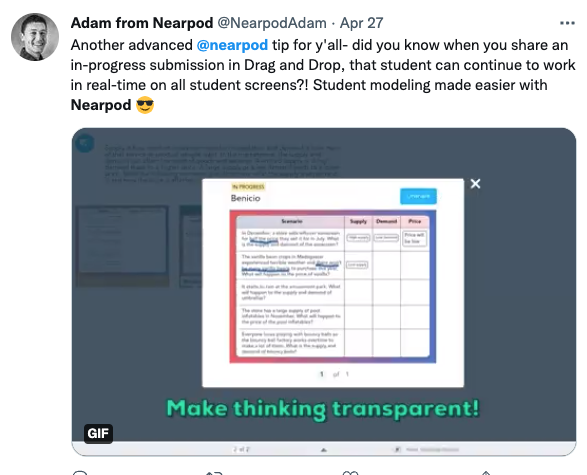
And breathe!
Accept that you will make mistakes, veteran teachers do too. Learn from them and move on.
Anne Ruifrok Walker, PioNear
Start using Nearpod in your classroom
Take care of yourself and have patience as you learn and grow as a professional. I learned as much, if not more, in Year 2 than in Year 1, so stay open to being that lifelong learner that we’re all trying to inspire in our students. Now, we’re looking to you all to help this school year’s cadre of first year teachers maintain their optimism, face challenges head-on, and rise to the ranks of “veteran teacher” (not sure I’ve made it yet!).
Nearpod can support you in creating interactive lessons, accessing standards-aligned lessons, keeping students engaged, and tracking real-time insights into student learning. Teachers can sign up for Nearpod below for free. Administrators can schedule a call with an expert to unlock the full power of Nearpod for schools and districts.

Darri Stephens is a dedicated LX (learning experience) designer, passionate about creating quality content and programs for kids, families, and educators. With MAs in Education from both Harvard and Stanford, and work experience at best-in-class ed tech organizations including Wonder Workshop, Nickelodeon, and Common Sense Education, she is steeped in the design thinking process and committed to agile and iterative project management, which has resulted in multi-award-winning programs and products.
